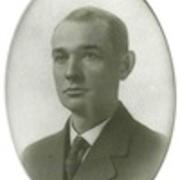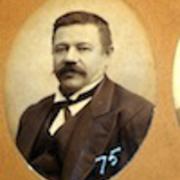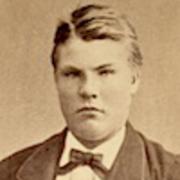
Women
The information about female workers is very scanty as few in number were employed relative to the number of male workers, and the women who did work there are largely only known by their entries in payroll and US census records. Several women whose lives could be reconstructed were two mother and daughter families-Sarah and Sadie Constant and Josephine and Jennie Sheeran, along with Mary E. Walker, who worked as a matron at the capitol building after it opened. The Constants lived in residence hotels in Saint Paul and Josephine and Jennie Sheeran lived at the House of the Good Shepard. Both Sarah Constant and Jennie Sheeran worked on the capitol in the later stages of construction in 1905.
Sarah Constant came to Saint Paul from Saint Louis, Missouri with her husband Paul and their daughter Sadie was born in Saint Paul in 1889 in Ward 3 near the downtown core of the city. By the time of the 1900 United States Census Sarah was widowed and raising a son Paul and Sadie. In 1902 tragedy struck the family when Paul committed suicide by drinking carbolic acid. Also in 1902 Sarah appears in a brief article in the Saint Paul Globe newspaper after having been arrested for drunkenness. How exactly Sarah came to work on the capitol is not known but her name appears in the later payroll records as a cleaner. It was not genteel work, involving such tasks as cleaning the tobacco juice left by construction workers in the window wells and picking up construction debris on the grounds. But it paid better than most female occupations. Women who worked as janitors and cleaners at the Capitol earned $1.50 a day for a nine or ten hour day – 25 cents a day less than males in their positions - but good wages for women who were paid 75 cents to a dollar a day for house cleaning or factory work at the time.
Sarah and Sadie managed to stay together although they moved frequently. Later Sarah worked as a cook at a restaurant in downtown Saint Paul at 247 West 7th Street until 1918 when they both disappear from the Saint Paul City Directory.
Other female cleaners, like Josephine Sheeran, lived with her daughter Jennie at the House of the Good Shepard a Catholic home for indigent women and orphaned girls. The House of the Good Shepard was started in Saint Paul in the 1860s by the Order of Our Lady of Charity of the Good Shepard of Angers, a Catholic women’s religious order. Four sisters came to Saint Paul at the invitation of Rev. John Ireland to provide shelter and safety to young girls and women. The sisters established a home and over time it grew and accepted children, infants, and indigent women. Then on August 20, 1904 a massive windstorm heavily damaged the residence and most importantly, the commercial laundry that the adult residents worked in to help support the home. This proved to be a huge loss for the community as it’s principal source of income had been disrupted. James J. Hill, the railroad magnate and his wife Mary may have intervened at this point and helped to secure employment for some of the adult women on the capitol construction site as cleaners.
Mary E. Walker had managed to obtain a full time matron’s position in the Capitol after it opened. This type of position was frequently a political patronage position. She and her husband Nace Walker lived in the Rondo neighborhood in Saint Paul for many years afterwards. Other women such as Good Shepard resident Anna Young later found employment as the forewoman at Standard Laundry and another Mary Walker worked as a seamstress at M.L. Deshanweerse Laundry in Saint Paul.
For current information about the Sisters of the Good Shepard, parent organization of the House of the Good Shepard, see: Sisters of the Good Shepherd
For a history of the site on which the House of the Good Shepard stood, see Frogtown Farm and Park History.
-Dan Ganley and Victoria Woodcock






